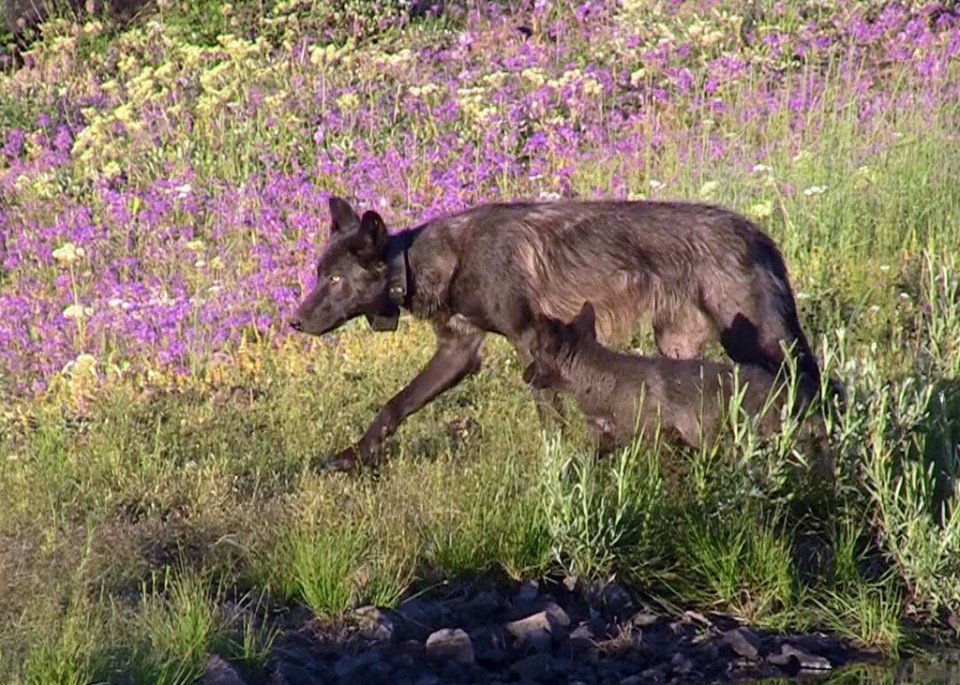
When cattle industry insiders promoting the interests of Oregon’s ranchers and their 1.5 million head of livestock gather to craft the newest chapter of the industry-created myth that Oregon’s 150 or so wolves no longer need state protections, they know they have a significant challenge to overcome — the facts.
That’s why four times in the past five years, cattle interests have lobbied the Oregon Legislature to pass a special law sidestepping the state endangered species act to strip state protections from wolves: They’ve always known science, state laws and most Oregonians all support continuing protections for wolves.
And that’s why the law they successfully pushed for this year not only ratified the Oregon Fish and Wildlife Commission’s illegal decision to prematurely strip state protections for wolves, but was also designed to impede court challenges: They knew the legal facts were not in their favor.
So it came as no surprise that they were agitated when the Oregon Court of Appeals ruled last month that three conservation groups could proceed with their legal challenge to the state’s decision to drop protections for wolves — a decision that defied the Oregon wolf plan and existing state law.
The cattle industry’s response has been to ramp up efforts to convince Oregonians that ranchers have worked hard to support the Oregon wolf plan, so the time has come to lift the great burden caused by the state’s wolves.
But again, the facts get in their way.
From the start, the cattle industry opposed efforts to craft a state wolf conservation and management plan. Instead, industry representatives did all they could to undermine the plan and state and federal protections for wolves. To that end, in 2011, 2012, 2015 and 2016 they pushed for a special bill to drop state wolf protections.
Back in 2003, when state-appointed stakeholders — including me — began the difficult work of helping state wildlife biologists craft a wolf conservation and management plan, the livestock industry’s representative announced a position of “zero tolerance” for wolves then sat silent during a year and a half of meetings, refusing to negotiate or even to discuss the plan’s components.
Livestock industry reps refused to sign onto the plan once it was adopted in 2005, and in the following years the Oregon Cattlemen’s Association and Oregon Farm Bureau continued to emphatically oppose any protections for wolves.
The two groups even fought legislation recommended by the plan for a compensation fund to pay ranchers for wolf-caused losses and to financially assist ranchers to use nonlethal methods to prevent conflicts between livestock and wolves.
Because of the cattle industry’s obstructive efforts, it took six years before a bill aimed at assisting ranchers could become law.
Central to the cattle industry’s efforts to portray itself as victim has been the push to promote the myth of the tremendous burden wolves have placed on ranchers and livestock.
Again, the facts suggest otherwise.
To begin with, ranchers know that wolves are responsible for a tiny percentage of cattle losses, far fewer than from illness, birthing complications, weather, poison weeds or even dog attacks.
The industry’s 19th-century era anti-wolf thinking ignores a growing body of 21st-century research concluding that wolves play irreplaceable roles in balancing healthy ecosystems, and that killing wolves can increase wolf-livestock conflicts, reduce human tolerance for coexisting with wolves and increase levels of wolf poaching.
It also ignores the fact that, for years, wolf-livestock conflicts were decreasing before Oregon opted late last year to violate the Oregon wolf plan by putting off a mandatory five-year plan review and instead ramming through state-delisting of wolves. That decision was not only premature but violated state law by not allowing for peer-review of state findings that a group of leading, independent scientists called “fundamentally flawed.”
The 155 or so wolves now in Oregon represent only about 10 percent of the number the state can support and occupy only 12 percent of suitable wolf habitat, according to leading researchers.
As the cattle industry continues to fight against any requirement that ranchers take proactive, nonlethal steps to prevent wolf-livestock conflicts, the price for the industry’s intransigence is already being paid by both livestock and wolves.
Only a few weeks after Gov. Kate Brown signed into law the livestock industry’s legislation to delist wolves, four wolves were shot by the state for killing livestock — the first state-sanctioned wolf-shootings in five years. If the special interests continue to get their way, you can be sure more will follow.
It’s all part of selling the fairy tale that wolves are the problem — when all the facts suggest they’re an important part of the solution.
Amaroq Weiss, the West Coast wolf organizer for the Center for Biological Diversity, was an appointed representative to the citizen-stakeholder group that helped write the original state wolf plan.
Source: Delisting of wolves not supported by the facts | Opinion | Eugene, Oregon
